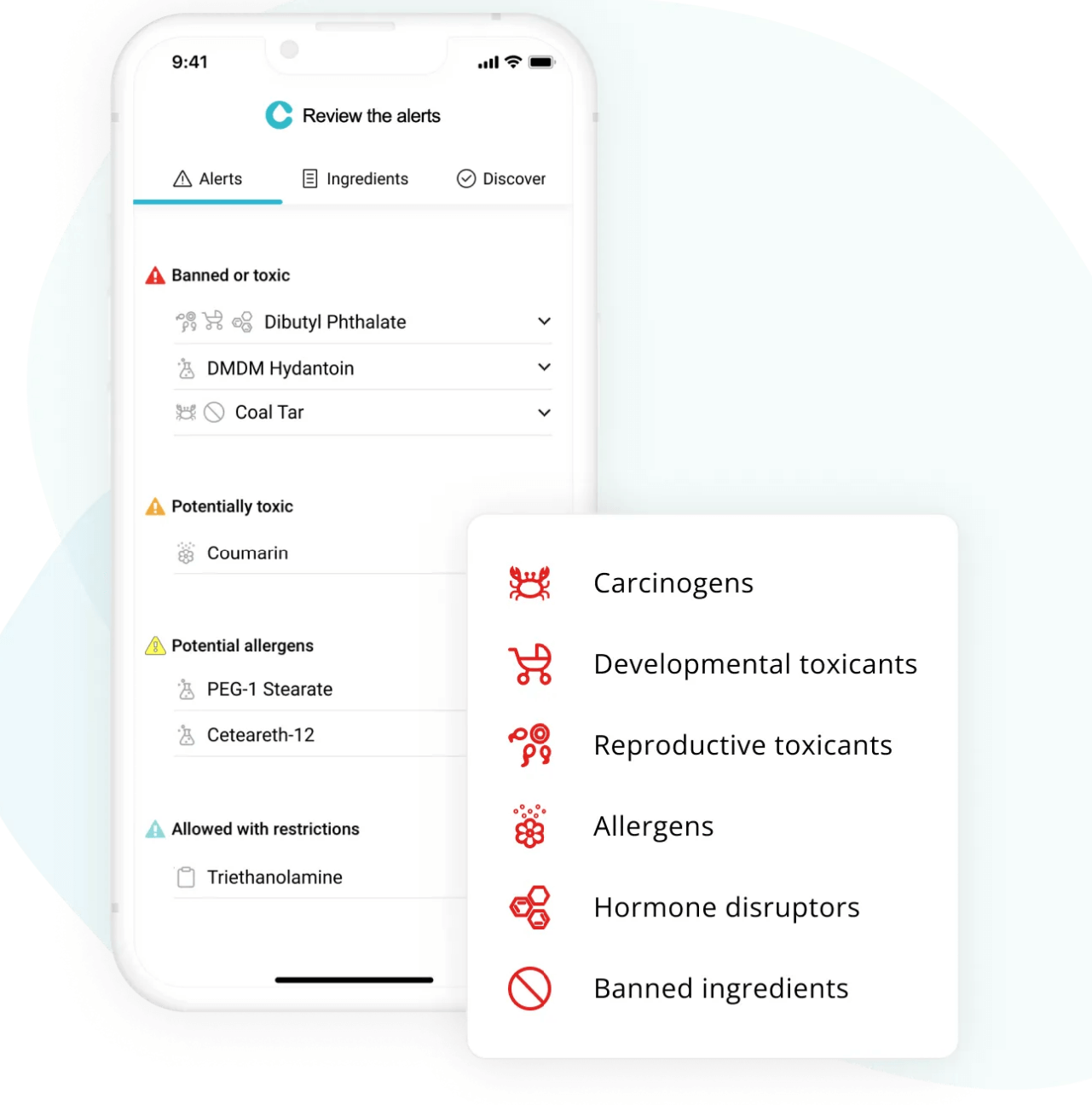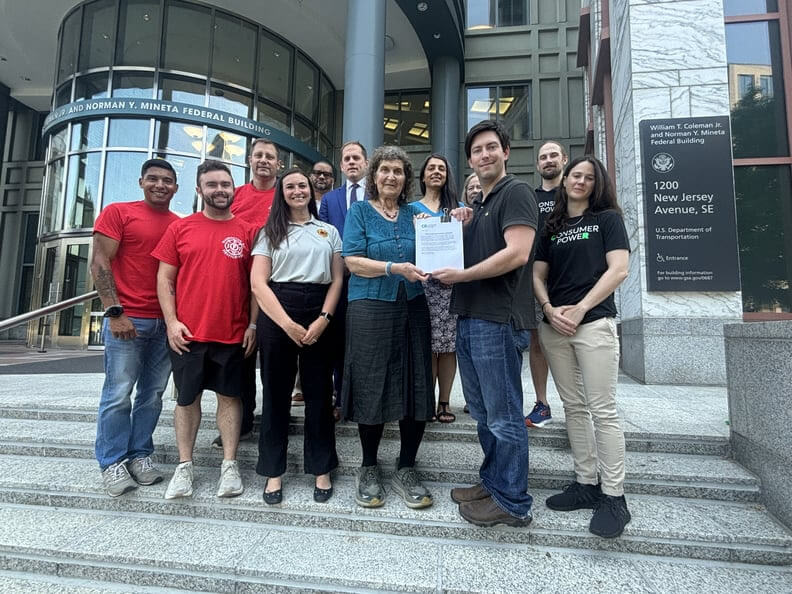July 2024 : Safer Sedans, Sodas, & Shopping
In this edition:
- New Blog: Washing the Outdoors with Harmful Disinfectants?
- Dirty Chemicals Don’t Belong in Clean Energy Solutions
- We All Scream for Sunscreen: Part II
- Simpler Safer Shopping
- Green Science Policy Institute in the News
- Calendar
I hope you are having an enjoyable and restful summer. So far, it has been a season of success at our Institute.
Last month, our science and policy consultant Anna Soehl and I went to DC to meet with Congressional and agency staff about reducing the unnecessary use of flame retardants inside cars and in the plastic enclosures around lithium-ion batteries, as well as the overuse of harmful antimicrobials.
Then, we joined representatives from Consumer Reports (CR) and the International Association of Fire Fighters (IAFF) in delivering a petition with 32,000 signatures and a letter from 71 organizations to the National Highway Traffic Safety Administration (NHTSA) headquarters. Our powerful partnership is asking NHTSA to “Get cancer-causing chemicals out of cars.” The fire fighters are eloquent spokespeople for reducing the unnecessary use of flame retardants and Consumer Reports is a strong voice for safe and healthy products.
We were delighted to see the August Consumer Reports message "from Our President" that discusses our car study with Duke University finding cancer-causing and neurotoxic flame retardants in all of the 101 cars we studied. We agree with her message that “It’s past time for vehicle safety standards to change, which is why CR is calling on NHTSA to update its rules.”
As you may recall, our joint petition asks NHTSA to modernize its 1971 vehicle flammability standard to be maintain fire safety without flame retardants. NHTSA is now reviewing the petition and our study, and we’re hopeful that long-awaited progress could be coming.
Also, since the 1970’s, I have written that brominated vegetable oils (BVOs) shouldn’t be allowed in foods and soft drinks. We’re pleased that the FDA is taking action to stop the use of these brominated chemicals–and wonder why it has taken them half a century.
Patented as a flame retardant for plastics, and banned in food in the EU and Japan, BVOs have been added to citrus sodas to give these soft drinks the cloudy look of real fruit juice. This month, at long last, the FDA revoked their approval for BVOs in foods and beverages.
Drinking more than two liters a day of BVO-containing sodas can lead to severe bromine toxicity requiring medical treatment, and rats exposed at low concentrations experienced thyroid damage. Good riddance!
Our Institute’s contribution to such positive change is based on our strategy of producing and widely communicating policy-relevant research. We recently learned that we co-authored six out of the 20 most-read papers in Environmental Science & Technology Letters. This ranking is based on readership over just the past twelve months, and most of our papers listed are several years old, showing the long lasting interest in and impact of our research papers. Additionally, four years after the journal produced this accompanying video to our PFAS as a class paper, it remains the featured video on the journal’s homepage.
Finally, we are pleased to share with you that we would like to hire an experienced Principal Scientist to join our Institute. The Principal Scientist will be my thought partner and help me manage our staff and operations. They will also collaborate with our team on our science and policy projects. Candidates should have a PhD or equivalent in chemistry, biology, public health, or a related field, as well as five years or more of scientific and managerial experience. To learn more and apply, see our Jobs Page or our post on LinkedIn. Please do share with scientists who may be a good fit.
Enjoy the rest of your summer,
Arlene and the Green Science Policy team
PS Our Institute has a free room in our lovely North Berkeley office. If you are a scientist or NGO who would like a Berkeley office in which to work, please get in touch.
PPS I’m looking for in-person administrative help for a few hours each week on weekends or evenings.
New Blog: Washing the Outdoors with Harmful Disinfectants?
By Gary Marcos, Institute volunteer and friend
Have you ever noticed moss, mold, or algae growing on your driveway, roof, or deck?
This problem can not only be unsightly, but it can also pose slip hazards and deteriorate building materials. Many homeowners and property managers turn to outdoor biocide products as a quick fix. Unfortunately, these products increasingly contain harmful quaternary ammonium compounds (QACs or quats) which can create severe problems for our health and ecosystems. You can usually identify QACs by looking for ingredients ending with “—nium chloride” such as dimethyl benzyl ammonium chloride.
QACs are linked to skin, lung, immune, reproductive, developmental, and neurological harms in people. These chemicals also contribute to antibiotic resistance—a serious and growing global health problem. We’re already overusing them as disinfectants in indoor environments like homes, gyms, and schools. Spraying the outdoors with QACs will increase harmful exposures.
Because I live in Washington State in a damp climate, slippery moss tends to grow on my driveway. I also have a protected water area behind my house, so I was especially reluctant to use chemicals of emerging concern in this fragile environment. I researched alternatives such as acetic acid (i.e., vinegar) and sodium hypochlorite (i.e., bleach). I also looked into pressure washers. Each of these solutions have their pros and cons, but none come with risks as serious or long-lasting as QACs…read the rest of this blog on our website here.
Dirty Chemicals Don’t Belong in Clean Energy Solutions
By Rebecca Fuoco
Lithium-ion batteries are a key part of our growing clean energy infrastructure, with uses in electric cars and electronics (e.g., cell phones, medical devices, smart watches, or laptops). Demand is anticipated to grow exponentially over the next decade. Unfortunately, PFAS are widely used in these batteries, and a new peer-reviewed study has confirmed that this is leading to significant air and water pollution.
The authors further found that novel PFAS, called bis-perfluoroalkyl sulfonimides (bis-FASIs), demonstrate environmental persistence and ecotoxicity comparable to notorious phased out compounds such as PFOA. Another study just published identified 25 different PFAS around a lithium-ion battery recycling facility.
With PFAS in batteries escaping into the environment from the beginning to the end of their lifecycles, increased attention to chemical usage is needed for a safe clean energy transition. We encourage companies to develop batteries and other clean energy solutions without PFAS or other harmful chemicals (and congratulate the start-ups who are already doing so!)
We All Scream for Sunscreen: Part II
By Arlene Blum
With summer under way, those of us who love being outdoors are looking for effective sunscreens that do not contain harmful ingredients. This is a challenging topic.
Here’s some helpful advice from Marty Mulvilhill of Safer Made and our Institute’s Advisory Board: “The FDA recommends mineral sunscreens as a safer choice. They state that the only safe and effective sunscreen ingredients that meet their criteria are zinc oxide and titanium dioxide. These mineral ingredients are also the only ones considered "Reef Safe."
See the Safer Made chapter on UV Filter ingredients. My brand recommendations: All Good and Badger are among the best.”
People can also use the free Clearya mobile app as described below to select better sunscreens and personal care products. You can find suggestions for other recommended sunscreen without harmful ingredients at:
- National Geographic Seven of the Best Reef Safe Sunscreens (Not the spray)
- EWG Guide to Sunscreens
- Surfrider Foundation Guide to Reef Friendly Sunscreens
Surfrider, a nonprofit focused on healthy reefs and oceans, makes the following recommendations:
1. Check the label. Make sure your sunscreen does not contain the following harmful substances on the HEL list: Oxybenzone, Octinoxate, Octocrylene, 4- methylbenzylidene camphor, PABA, Parabens, Triclosan, any sort of microplastic, such as “exfoliating beads,” nanoparticles, or “nano-sized” zinc or titanium.
2. Use lotions rather than spray or misting sunscreens. The propellants can be harmful to you and the environment.
A friend who leads the Surfrider Foundation in Kauai, Hawaii shared her strategy: “I am concerned about the ingredients in sunscreens so I usually wear big hats and long-sleeved shirts and stay out of the midday sun.”
Simpler Safer Shopping
By Ariana Spentzos
Have you ever had the experience of staring at a product label, head swimming with complicated or vague chemical names, trying to determine if that product is safe enough?

When shopping for personal care products, we recommend the use of the free app and browser plug-in Clearya, which shows alerts for unsafe ingredients that appear on lists of hazardous chemicals compiled by regulators and scientists. The software works on top of major retailer websites like Target and Amazon to inform you if specific products contain harmful ingredients.
Clearya, in partnership with the Maine-based nonprofit Defend Our Health, has released an updated feature alerting consumers to undeclared PFAS in products. Through recent legislative action in Maine, companies have started to declare PFAS uses in their products and the preliminary information from 36 companies is now available through Clearya. They have been able to match the reported data to similar products and now, if you search for certain products online, Clearya will be able to give a warning if a product is likely to contain PFAS.
While it’s unfortunate that some of the work in choosing safer products has to be done by individual consumers, tools like Clearya are good to use as we play catch-up in creating policies for safer products.
Green Science Policy Institute in the News

By Rebecca Fuoco
Below are recent news articles, blogs, podcasts, newsletters, and more that have featured our Institute’s work and expertise.
- “A side effect of the renewable energy transition may be an increase in PFAS pollution – but only if decision makers let that happen,” our scientist Lydia Jahl told Consumer Affairs.
- Our petition delivery to NHTSA was covered by Automotive News, Collision Week, and Repair Driven News. Our car study also received new coverage in Wards Auto.
- “[I]t is a false choice to choose between renewable energy and less PFAS pollution,” our scientist Ariana Spentzos told The New Lede.
- Lydia spoke to Medical News Today about a new study finding lead, arsenic, and other metals in tampons.
- Our webpage on PFAS in outdoor gear was linked by an article in POWDER magazine.
- Our webpage on avoiding PFAS in cosmetics was linked by an article in MindBodyGreen.
- Lydia presented at the Fidra-hosted webinar ‘Effective sustainable fire safety without chemical flame retardants’.
- The August Consumer Reports message From Our President: Hidden Dangers in the Air discusses our car study.
Calendar
October 9, 2024 at noon EST:
NIEHS, Research Triangle Park, NC.
Arlene will present the NIEHS epidemiology branch seminar series talk.
October 11, 2024 at noon EST:
Arlene will speak at Duke University Program in Environmental Health/Superfund Center seminar series.
Receive Updates By Email
Subscribe to our monthly newsletter and get these updates delivered right to your inbox!




